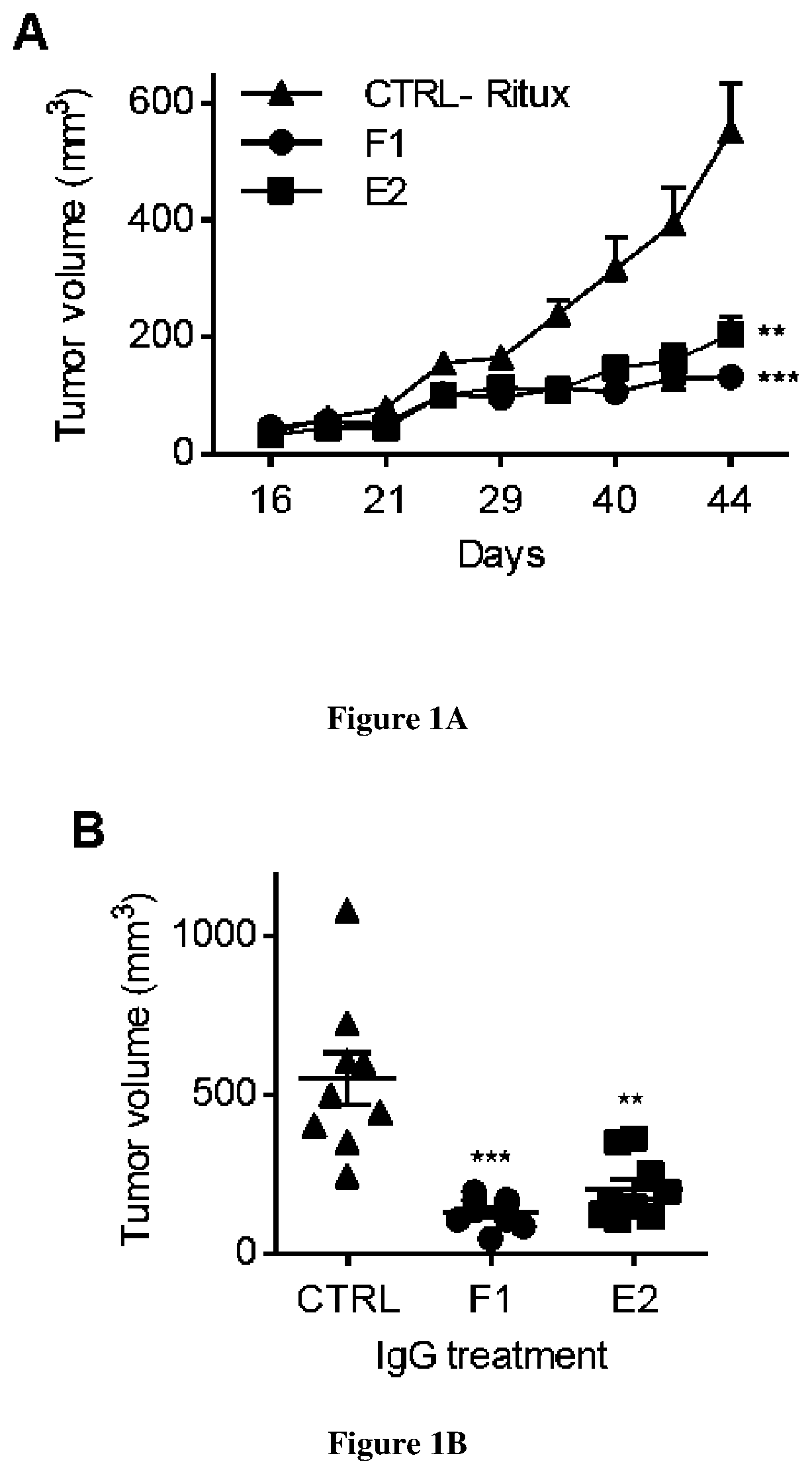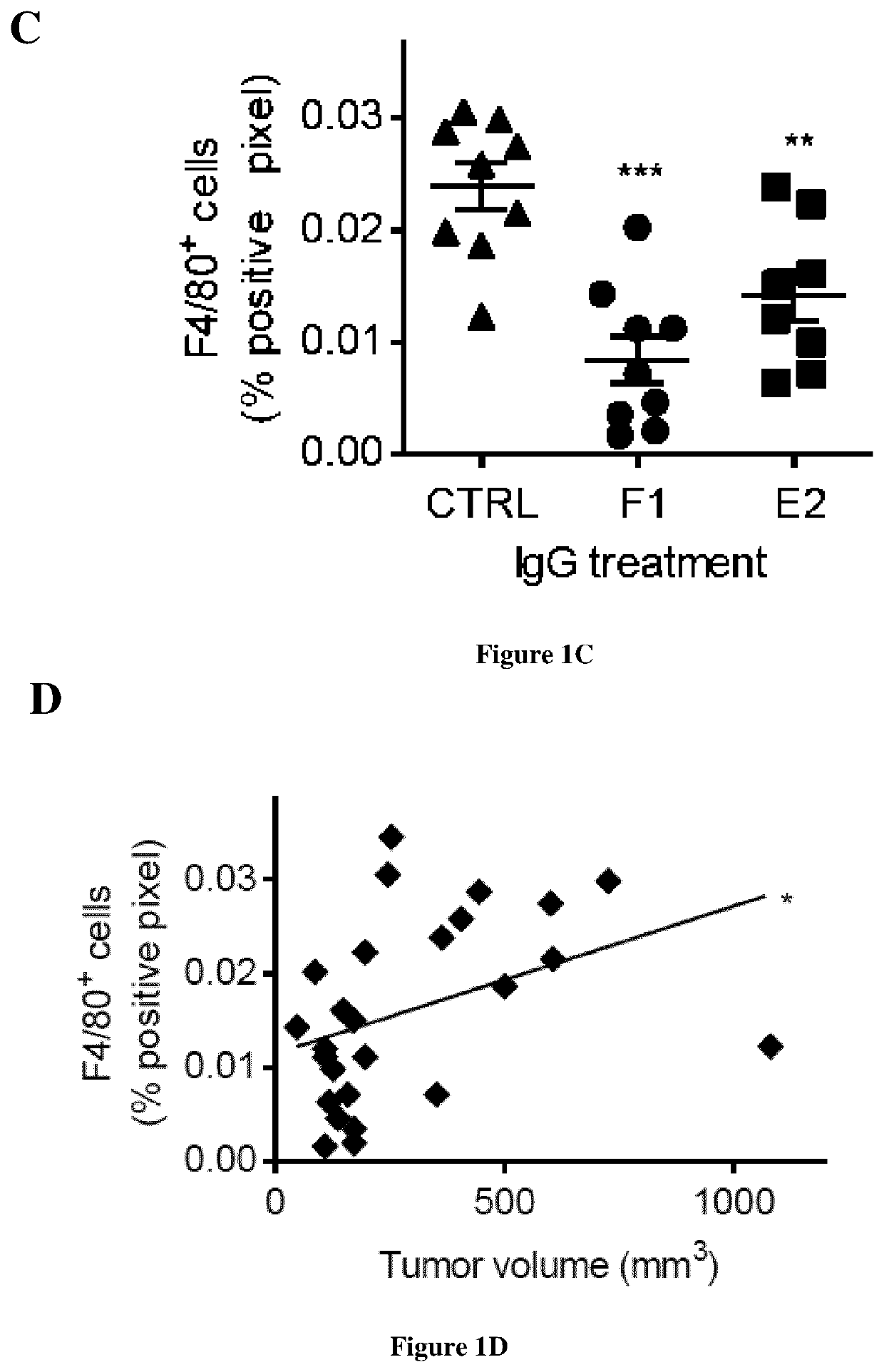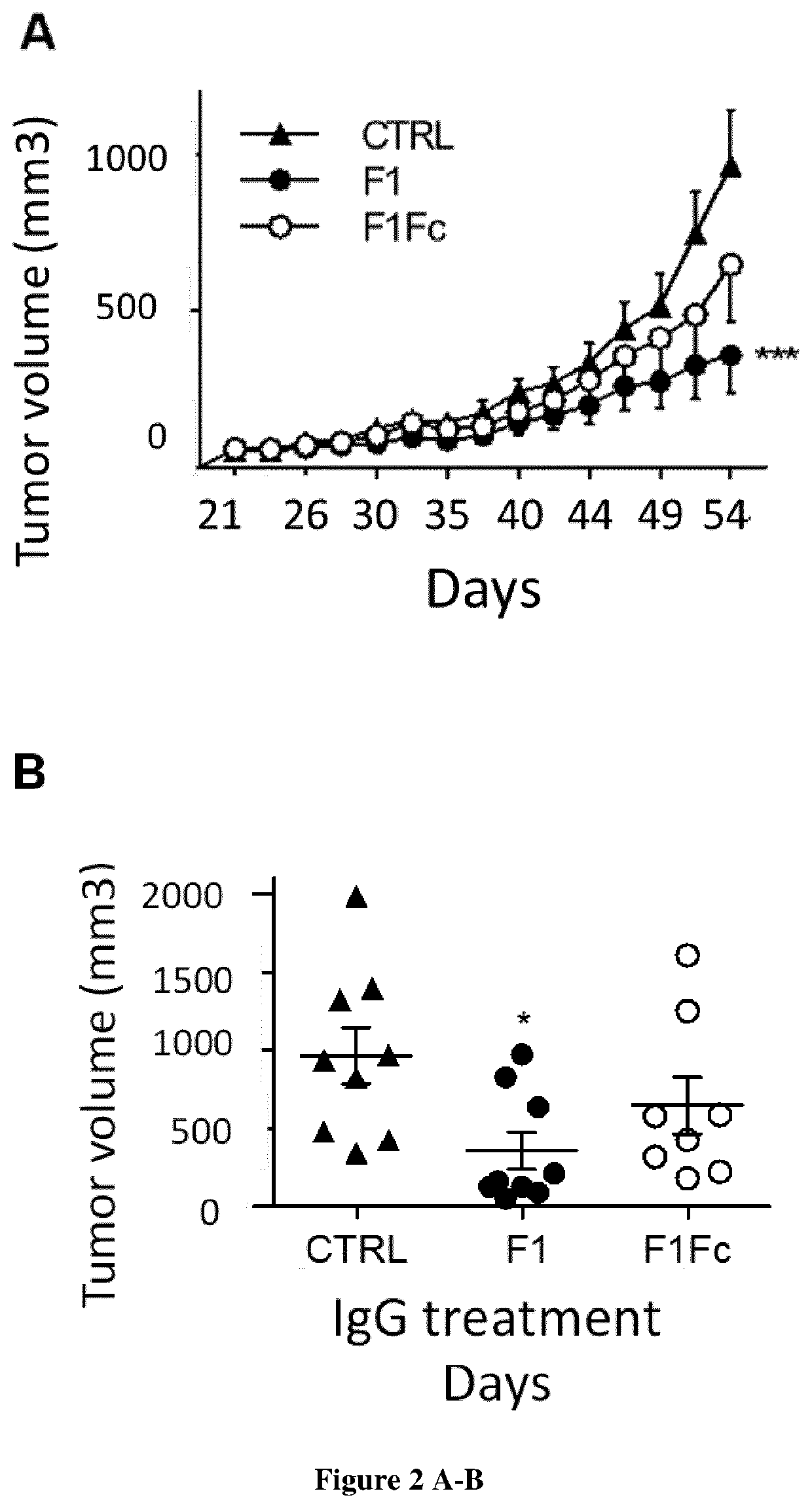Methods and compositions for treating cancers by immuno-modulation using antibodies against cathespin-d
a technology of immunomodulation and cathespin-d, which is applied in the field of cancer, can solve the problems of toxic effects of concomitant inhibition of intracellular and extracellular cath-d with cell-permeable chemical drugs (23) and achieve the effect of inhibiting tumor recruitmen
- Summary
- Abstract
- Description
- Claims
- Application Information
AI Technical Summary
Benefits of technology
Problems solved by technology
Method used
Image
Examples
example
[0107]Material & Methods
[0108]Reagents
[0109]The anti-human cath-D antibody against 52-, 48-, and 34-kDa forms was from Transduction Laboratories (#610801BD). The anti-human cath-D antibody (ab75811) against 14-kDa form was from Abcam. The anti-human cath-D antibody against 4-kDa pro-domain was kindly provided by Prof M. Fusek (Oklahoma Medical Research Foundation). The anti-human cath-D antibodies M1G8, D7E3 and M2E8 were previously described (9, 24). The anti-human cath-D antibody (clone C-5) and CD11c (HL3) were from Santa Cruz Biotechnology. The anti-human Fc antibody conjugated to HRP (A0170) was from Sigma Aldrich. The anti-human CD20 chimeric IgG1 antibody (rituximab) was from Roche, and the anti-mouse F4 / 80 antibody (clone BM8, MF48000) from Invitrogen. Matrigel (10 mg / ml) was purchased from Corning. The fluorescent-conjugated antibodies against CD45 (30-F11), F4 / 80 (BM8), CD11b (M1 / 70), and Gr1 (RB6-8C5) were from Thermo Fisher Scientific, and against CD49b (DX5), and MHC-II...
PUM
| Property | Measurement | Unit |
|---|---|---|
| volume | aaaaa | aaaaa |
| volumes | aaaaa | aaaaa |
| volume | aaaaa | aaaaa |
Abstract
Description
Claims
Application Information
 Login to View More
Login to View More - R&D
- Intellectual Property
- Life Sciences
- Materials
- Tech Scout
- Unparalleled Data Quality
- Higher Quality Content
- 60% Fewer Hallucinations
Browse by: Latest US Patents, China's latest patents, Technical Efficacy Thesaurus, Application Domain, Technology Topic, Popular Technical Reports.
© 2025 PatSnap. All rights reserved.Legal|Privacy policy|Modern Slavery Act Transparency Statement|Sitemap|About US| Contact US: help@patsnap.com



